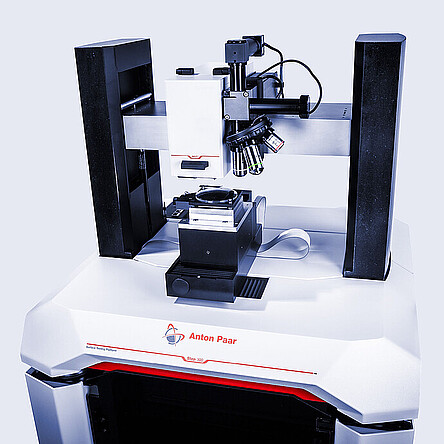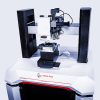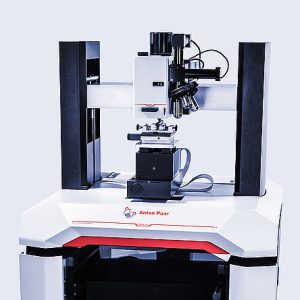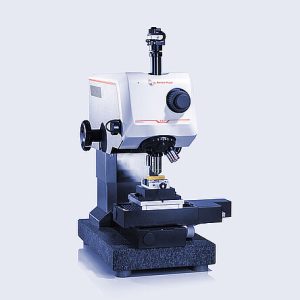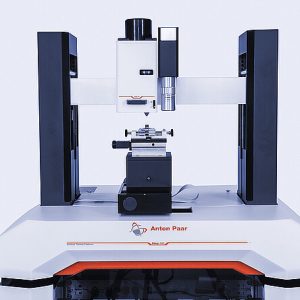Nano scratch tester: NST³
The NST³ nano scratch tester is particularly suited for characterizing the practical scratch resistance and adhesion failure of thin films and coatings with a typical thickness below 1000 nm. NST³ can be used to analyze organic and inorganic coatings as well as soft and hard coatings. The unique design of the nano-scratch measurement head includes two sensors for force and depth measurements associated with a state-of-the-art piezoelectric actuator. These unique features provide a fast response time (down to milliseconds), great accuracy, and great flexibility for all kinds of scratch measurements.
Combine instrumented indentation testing heads with scratch testing heads, a nanotribometer, and even an atomic force microscope on a unique Step surface testing platform.
Key features
Access to full synchronized panorama for analysis whenever, wherever
This unique feature automatically synchronizes the panoramic image of the whole scratch in perfect focus with scratch data from all sensors. You can therefore perform critical loads analysis based on panorama observation and signal recordings at any time. Anton Paar is the exclusive holder of the synchronized panorama technique (U.S. patent 8261600 and the European patent EP 2065695).
Fast response time to small forces applied
The NST³ nano scratch tester incorporates a double cantilever beam for application of the load combined with a piezoelectric actuator for an ultra-fast response to the load applied. This concept also corrects the result for deviations caused by any event occurring during the scratch (e.g. appearance of cracks and failure, defects, or non-flat sample).
No compromises: Apply exactly the force you want
The closed active force feedback loop provides even more accurate nano scratch testing. NST³ incorporates a real sensor for force measurement that directly feeds back to the normal force actuator. This ensures reproducible scratch testing, even when you investigate more complex surface geometries like non-parallel, rough, or curved samples.
True penetration depth measurements for elastic recovery studies
The NST³ nano scratch tester incorporates a real displacement sensor for monitoring the vertical motion of the indenter. Thanks to this sensor, the unique technique of pre- and post-scan allows you to get the true depth: elastic, plastic, and viscoelastic properties of materials can therefore be evaluated. This technique involves a pre-scan recording the surface profile (form, waviness, and roughness) of the sample before performing the scratch test. NST³ corrects the indenter depth during the scratch (penetration depth) and after the scratch (residual depth) using the surface profile.
Multi-post-scan mode to measure the viscous behavior after a scratch
After a scratch, you can define unlimited post-scan measurements in the software with a delta in time to measure the residual depth. This new analysis will give you additional understanding of the deformation behavior of your surface versus the recovery time.

